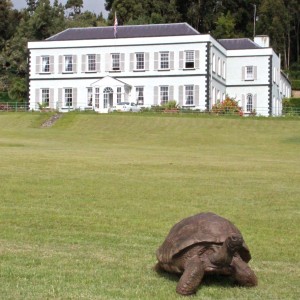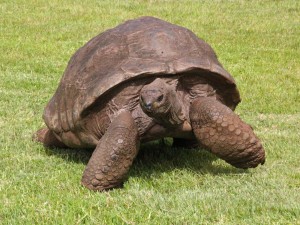 When Napoleon arrived on St Helena in October, 1815, there was only one building worthy of a sovereign: Plantation House, the governor’s country residence. Situated in a sheltered, charmingly bucolic setting, it provided a perfect location for Napoleon and his retinue. The military could easily defend its boundaries from invasion or escape. The governor’s family might comfortably relocate to the Castle, a large edifice near the wharf in Jamestown, and already the governor’s town residence and official office.
When Napoleon arrived on St Helena in October, 1815, there was only one building worthy of a sovereign: Plantation House, the governor’s country residence. Situated in a sheltered, charmingly bucolic setting, it provided a perfect location for Napoleon and his retinue. The military could easily defend its boundaries from invasion or escape. The governor’s family might comfortably relocate to the Castle, a large edifice near the wharf in Jamestown, and already the governor’s town residence and official office.
So why choose for Napoleon Longwood House, a former stable turned rat-infested, tumble-down shanty located in the dampest, windiest, foggiest place on the island? The answer depends on whether you think Napoleon was a legal prisoner or, as he contended, a former sovereign who had voluntarily requested asylum under British law. With reason and custom behind his claim, Napoleon died arguing in vain for his rights.
 Another long-time prisoner of St Helena is the island’s oldest current resident: Jonathan, a 179-year-old Seychelles tortoise who lives on Plantation House’s front lawn. Perhaps, he’s lucky to be there. In Napoleon’s time, sailors routinely captured giant tortoises from the Seychelles and Galapagos Islands. They stacked them on their backs in their ships’ hulls where the animals would survive for weeks without food or water. Then, throughout their long voyages, the crew slaughtered these beauties for fresh meat. Forgive us, Jonathan!
Another long-time prisoner of St Helena is the island’s oldest current resident: Jonathan, a 179-year-old Seychelles tortoise who lives on Plantation House’s front lawn. Perhaps, he’s lucky to be there. In Napoleon’s time, sailors routinely captured giant tortoises from the Seychelles and Galapagos Islands. They stacked them on their backs in their ships’ hulls where the animals would survive for weeks without food or water. Then, throughout their long voyages, the crew slaughtered these beauties for fresh meat. Forgive us, Jonathan!

Pingback: Finding Napoleon » Darwin, Tortoises and St Helena